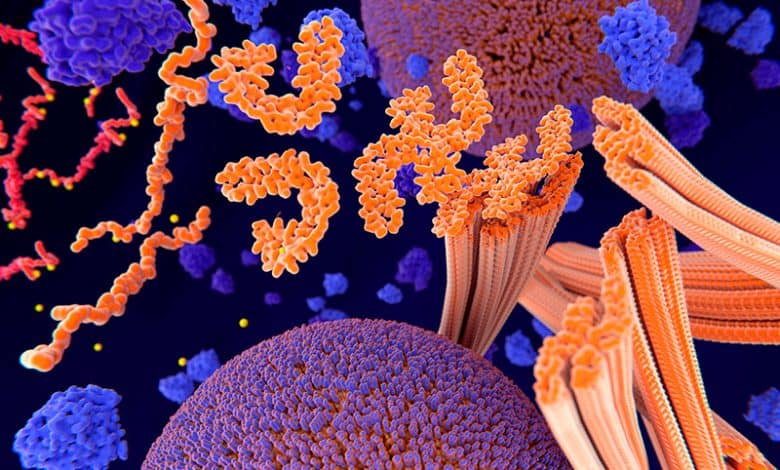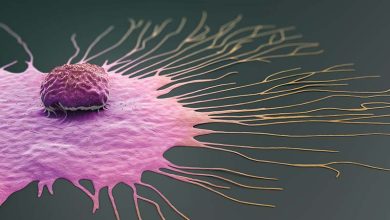
Neurology, diagnosis of nervous system ailments, treatment of diseases, and prescription of its medicines have passed through long stages throughout history, and human civilizations have made unremitting efforts in this regard, until the modern era has yielded pioneering treatments and great development. Perhaps the reason for the delay in medical discovery in this field is due to the sensitivity of dealing with nerves, and the lack of knowledge of their structure and mechanism of action until after the development of other basic sciences such as chemistry and physics.
The interest in neurological diseases dates back to prehistoric times, with one of the ancient Egyptian treatises on trauma surgery, specifically the Edwin Smith Papyrus, describing it and proposing treatments for various neurological injuries. We find descriptions of the meninges, the outer surface of the brain, cerebrospinal fluid, intracranial impulses, as well as some bodily functions that may be affected by brain injuries or cervical spine injuries. The Sumerians painted the paraplegia caused by physical trauma in a bas-relief of a lion with an arrow in the back.
The Indians made their efforts to know about neurological disorders that are not caused by physical disorders, for example in the medicine of the Vedic period in ancient India, the Ayurvedic text Charaka Samhita discussed epilepsy, in terms of its symptoms and possible treatments. The Buddha's physician, Jīvaka Komārabhacca, performed surgery to remove two parasites from the brain of a patient in the fifth century BC. The Greek physician Hippocrates was convinced that epilepsy had a natural cause, not a sacred cause. The ancient Greeks explained the nervous system, Aristotle described the meninges, and distinguished between the brain and the cerebellum. Galen then performed simple operations to dissect the nervous system in a variety of animals, including monkeys.
Hua Tuo was a Chinese physician and pioneer of surgery who lived in the late Han dynasty in the third century CE, and is said to have performed surgery on the nervous system.
Arab and Muslim Scientists
The diagnosis and treatment of neurological diseases witnessed a qualitative leap during the era of the Arab-Islamic civilization, and its doctors expanded their knowledge of the nervous system and distinguished it from other organs. This medical knowledge reached them through foreign translations, and they absorbed it in a distinct way and later excelled in it, devouring new methods of treating neurological diseases that largely established the treatments that emerged in the European Renaissance later.
The most prominent neurological diseases studied by Arab and Muslim doctors and scientists and developed diagnoses and treatments for them are:
Meningitis
Meningitiswas known to Arab doctors by several names, so they called it (hot sarsam), a Persian term consisting of two syllables (secret) meaning head, and (poisonous) meaning disease and tumor. Arab doctors distinguished between encephalitis, which was called (Lethargy and Cephalitis), which complains of a slight rise in temperature and headache that lasts several days, and meningitis, which was called (Creniitis), which affects the membranes covering the brain and spinal cord, and sufferers suffer from headache, back and muscle pain, sensitivity of the eyes to light and stiffness in the neck.
It seems from the common terminology in the Arabic medical literature that this disease and its types were known to Greek physicians. However, we will find the first references to meningitis as an epidemic in the footnotes to al-Jahiz's book al-Animal (d. 255 AH / 869 CE), where he said: "Al-Midani says that Allah ruled over a who were dragged by a disease called the marrow, and eighty of them perished in one night, except for the young men." The Egyptian historian Abd al-Salam Haroun mentions that this epidemic swept Egypt around 1922.
This is because meningitis is an infectious disease that affects the protective membranes that surround the brain and spinal cord, and is transmitted through respiratory secretions, whether through coughing, sneezing, or sharing cups and personal items, which explains its transformation into an epidemic that has spread in Egypt.
Abu Bakr al-Razi (died around 313 AH / 953 CE) also defined this disease and suggested treating it in his book (Al-Hawi fi al-Tibb) by phlebotomy, after mentioning the symptoms, where he said: "If the heaviness and pain in the head and neck last for two days, three, four, five and more, and the sight deviates from the light, and tears are generated, and there is a lot of yawning and stretching, and a lot of vigilance with it, and severe fatigue occurs, then the sick person is transmitted to the sarsam, ... If the heaviness in the head is more than the pain, and there is no sleep, and the heat is calmer, and the pulse is wide and not fast, it has passed to Lethergus, then when I see these signs, I will be delivered, and I have deliberately left a congregation to clear my opinion, and they will all be ordained. This may be in blood diets. If you see signs of smallpox in a fever, know that it is transmitted to him, and if you see these signs it is transmitted to him." He concluded with an empirical educational conclusion that "if you always see heaviness and soreness in the head, I am sure that sarsam has occurred."
Today, the disease is no longer treated by phlebotomy, but we thank Al-Razi for trying to introduce an unprecedented new approach to treatment. Ibn Sina (d. 428 AH/1037 CE) also described acute meningitis and differentiated it from other meningitis.
Epilepsy
Epilepsy is a brain disorder characterized by frequent and sudden trauma. Ibn Sina defined vertigo epilepsy as: "To imagine that things are spinning on him, and that his brain and body are spinning, so he cannot stand, but fall." He realized that one of its symptoms was that it prevented "the psychological organs from acts of sense, movement and erection together incompletely, due to a dam that falls, and most of it is a total spasm presented by a lesion of the abdomen provided by the brain."
As for the cause of epilepsy, Ibn Sina suggests that the brain "contracts to push the harmful like what is exposed to the stomach from hiccups and vomiting." But we recently know that the brain does not contract like the stomach to pay harm, but may be blocked by blockage of the brain's stomachs and cerebrospinal fluid retention, or the spillage of blood or other mixing into it. Ibn Sina also pointed to the possibility that epilepsy arose from the effect of certain toxins in the nerve, an explanation close to the current explanation for the case of serious tetanus disease, which is caused by toxins of a bacterium called (Clostridium tetanus) and makes the muscles of the patient spasms so violently that he is unable to open his mouth or move his jaw.
Stroke
A stroke is a sudden interruption in the blood supply to the brain. Ibn Sina stated that "a stroke disrupts the organs from sensation and movement because of a blockage located in the stomachs of the brain, and in the sensitive and moving streams of the soul", and he realized the difference between a patient having a stroke and coma (they called it hibernation), which is a state of complete deep loss of consciousness; The stroke is preceded by the most frequent headache, swelling of the jugs, dizziness, Sidr, darkness of sight and convulsions of the whole body. As for the tumor, it is not without a fever, and what was blood indicates that the face is reddish, the eyes are very red, and the veins and veins of the neck are extended."
Heiplegia
Hemiplegia is a condition in which one end of the body relaxes longitudinally. Ibn Sina identified the causes of this disease, which are either a severe blow or a fall, and the brain is affected by this a lot. Ibn Sina said: "And know that often the wet substance rushes to the upper extremities freely on the body or for a movement of fear or alarm or anger or distress or anguish. And know that if the lesion and the substance that makes the hemiplegia in one of the stomachs of the brain are incision of the whole body and the facial incision with it."
Ibn Sina has suggested the period of time a person can develop hemiplegia, it is more winter than summer, and people over the age of fifty. Ibn Sina said: "Most of what displays hemiplegia is displayed in the severity of the winter cold, and may be exposed in the spring to the movement of fullness, and may be exposed in the southern countries of those who have reached fifty years and so on as calamities rushing from their heads because of the large number of what fills the southern mood head."
Europeans Benefit
The impact of Arab efforts in neuroscience in Western medical literature is felt in the predominance of Arabic terminology since the eleventh century AD. Constantine the African (died 1087), Gérard of Cremonia (died 1187), Faraj ibn Salem al-Sicili (died circa 1285), and Simon al-Genoese (died 1292) introduced many words into Latin in Europe, for example, the word marrow (Nucha), peritoneum (Siphac), and omentum (Zirbus).
The tripartite division of the brain (or the distribution of mental abilities in the brain) that appeared in the book Kamil al-Sina'a al-Medicaliyya by Ali ibn Abbas al-Ahwazi (d. 383 AH/993 CE) was adopted by Guillaume de Conche and Nemesius Demis. Not to mention the dominance of Ibn Sina's Canon of Medicine with all its teachings over European medical education from the first half of the fourteenth century AD until the first decade of the nineteenth century.
Dr. Sakir Basma Ji
Is a Researcher in the History of Science Among the Arabs




